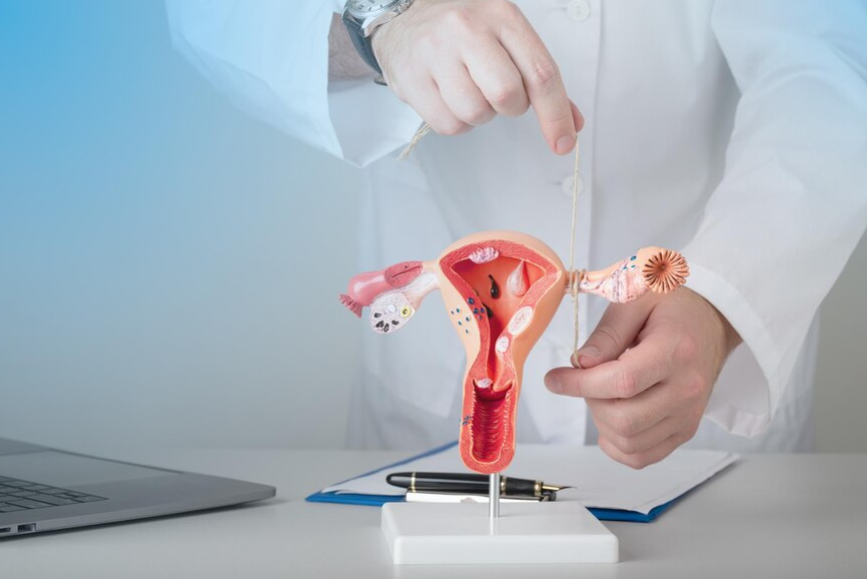
08 Feb Understanding Uterus Removal for Fibroids
Uterus removal, medically termed hysterectomy, is a common treatment approach for women with symptomatic uterine fibroids. In this comprehensive guide, we’ll delve into the details of uterus removal for fibroids, including its indications, treatment options, surgical techniques, recovery process, and considerations for patients considering this treatment option.
Understanding Uterine Fibroids: Uterine fibroids, also known as leiomyomas, are noncancerous growths that develop in the muscular wall of the uterus. While fibroids may not always cause symptoms, they can lead to various issues such as heavy menstrual bleeding, pelvic pain, pressure symptoms, and infertility. When fibroid symptoms significantly impact a woman’s quality of life and other treatment options have been unsuccessful, uterus removal may be recommended as a definitive solution.
Indications for Uterus Removal for Fibroids:
- Persistent Symptoms: Women experiencing persistent and bothersome symptoms related to fibroids, such as heavy menstrual bleeding, pelvic pain, or pressure symptoms, may opt for uterus removal when conservative treatments fail to provide adequate relief.
- Size or Number of Fibroids: Large or multiple fibroids may increase the likelihood of symptoms and complications, making uterus removal a preferred treatment option to address the underlying cause of fibroid-related issues.
- Desire for Definitive Treatment: Uterus removal offers a permanent solution for women who no longer wish to conceive or have completed their family and are seeking a definitive resolution to fibroid-related symptoms.
Treatment Options for Uterus Removal: There are several approaches to uterus removal for fibroids, including:
- Total Abdominal Hysterectomy: In a total abdominal hysterectomy, the uterus is removed through an incision made in the abdomen. This approach may be preferred for large fibroids or when additional procedures, such as removal of the ovaries or fallopian tubes, are indicated.
- Laparoscopic Hysterectomy: Laparoscopic hysterectomy is a minimally invasive surgical technique that involves making several small incisions in the abdomen through which specialized instruments and a camera (laparoscope) are inserted. The uterus is then dissected and removed through one of the incisions, resulting in less post-operative pain, shorter hospital stays, and faster recovery times compared to traditional open surgery.
- Vaginal Hysterectomy: Vaginal hysterectomy involves the removal of the uterus through the vagina, without the need for external incisions. This approach may be suitable for women with smaller fibroids and favorable pelvic anatomy, offering the advantages of reduced post-operative pain and faster recovery.
Recovery After Uterus Removal: The recovery period following uterus removal for fibroids varies depending on the surgical technique used and individual patient factors. In general, women undergoing laparoscopic or vaginal hysterectomy experience shorter hospital stays, less post-operative pain, and faster return to normal activities compared to abdominal hysterectomy. Patients are typically advised to avoid heavy lifting and strenuous activities for several weeks after surgery and may require pain medication and pelvic rest during the initial recovery period.
Considerations for Uterus Removal for Fibroids: While uterus removal offers many benefits for women with symptomatic uterine fibroids, it is important to consider the potential risks and implications of the procedure. Factors such as the patient’s age, desire for future fertility, overall health, and preferences should be taken into account when determining the most appropriate treatment approach. Women considering uterus removal for fibroids should discuss their treatment options with their healthcare provider and weigh the potential risks and benefits of the procedure.
In Conclusion: Uterus removal for fibroids is a viable treatment option for women with symptomatic fibroids who desire definitive relief from their symptoms. With advancements in surgical techniques, such as laparoscopic and vaginal hysterectomy, women can undergo this procedure with reduced post-operative pain, shorter hospital stays, and faster recovery times. By consulting with experienced specialists like Dr. Usha M Kumar, Gynecologist in South Delhi and considering the individual patient’s needs and preferences, women can make informed decisions about their treatment options and achieve optimal outcomes for their health and well-being.




Sorry, the comment form is closed at this time.